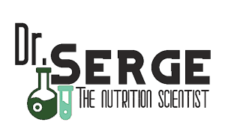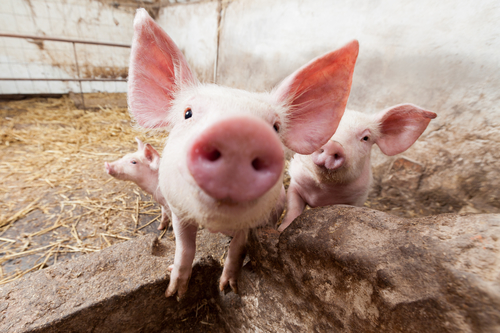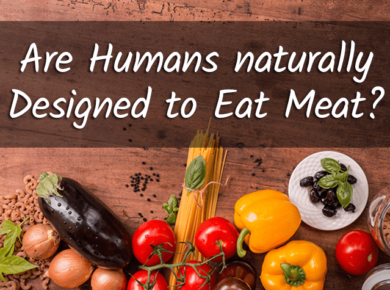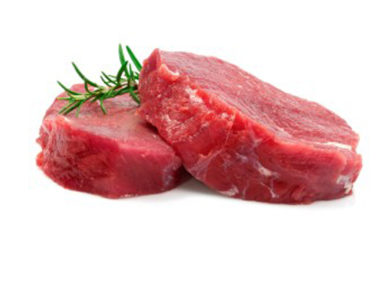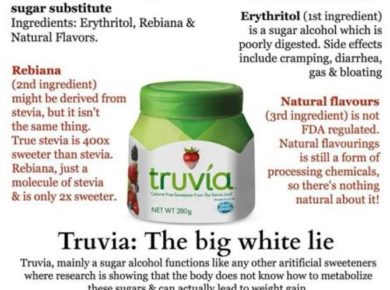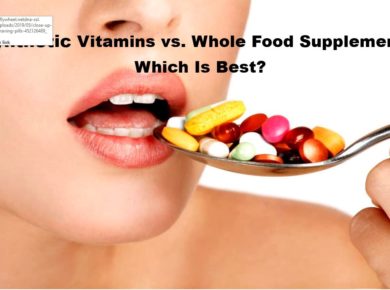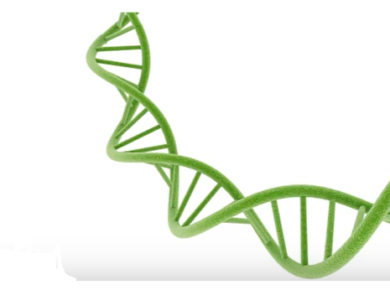When it comes to bacon, there is a lot of confusion and beliefs around it. Let’s remove all beliefs and propaganda. Let’s look at what science says 😊
It is a bit long, but I wanted to cover the main myths surrounding bacon and animal fats.
I intensively wrote on nitrites and nitrates in the past, but let’s recap a few points here.
Nitrates and nitrites are frequently added to processed meats like bacon, ham, sausages, and hot dogs. They function as preservatives, helping to prevent the growth of harmful bacteria
Still, if you wanted to avoid this preservative, you would have to cut out more than just ham to go cold turkey on nitrite. In a typical person’s diet, 80 percent of nitrite comes from vegetables such as spinach, radishes, and lettuce, and another 13 percent comes from swallowed saliva. Clearly, we cannot be pro-plant-based diet and anti-nitrates!
How is it possible for a substance that seems unhealthy to be so abundant in the body, and in healthy foods?
The answer is simple, this substance is safe!
There’s no difference whatsoever in the nitrite that you get from cured and processed meats versus what you get from vegetables. It’s the same molecule.
Evidence is mounting that nitrite preservatives are safe, but that doesn’t mean processed meats are healthy.
In fact, nitrites are produced by your own body in greater amounts than can be obtained from food, and salivary nitrite accounts for 70-90% of our total nitrite exposure. In other words, your spit contains far more nitrites than anything you could ever eat.
Indeed, when it comes to food, vegetables are the primary source of nitrites. On average, about 93% of nitrites we get from food come from vegetables.
It may shock you to learn that one serving of arugula, two servings of butter lettuce, and four servings of celery or beets all have more nitrite than 467 hot dogs.
And your own saliva has more nitrites than all of them! So, before you eliminate cured meats from your diet, you might want to address your celery intake. And try not to swallow so frequently.
Recent evidence suggests that nitrites are beneficial for immune and cardiovascular function; they are being studied as a potential treatment for hypertension, heart attacks, sickle cell, and circulatory disorders. Even if nitrites were harmful, cured meats are not a significant source.
And if you think you can avoid nitrates and nitrites by eating so-called “nitrite- and nitrate-free” hot dogs and bacon, don’t be fooled.
These products use “natural” sources of the same chemical-like celery and beet juice and sea salt and are no more free from nitrates and nitrites than standard cured meats. In fact, they may even contain more nitrates and nitrites when cured using “natural” preservatives.
In general, the bulk of the science suggests that nitrates and nitrites are not problematic and may even be beneficial to health.
Critical reviews of the original evidence suggesting that nitrates/nitrites are carcinogenic reveal that in the absence of co-administration of a carcinogenic nitrosamine precursor, there is no evidence for carcinogenesis.
Newly published prospective studies show no association between estimated intake of nitrite and nitrate in the diet and stomach cancer and colon cancer.
Nitric oxide, formed by nitrite, has been shown to have vasodilator properties and may modulate platelet function in the human body, improving blood pressure and reducing heart attack risk.
Nitrates may also help boost the immune system and protect against pathogenic bacteria.
Nitrites and nitrates are safe for human consumption and are beneficial.
Recently, the Harvard School of Public Health announced with great fanfare that just a small daily serving of red meat would increase our likelihood of death by 13 percent, while a little bacon, hot dog, sausage or other processed red meat every day would kill us off 20 percent faster.
This is another study that people did not take the time to really read.
In fact, the study was pseudo-science at its best. It was an observational study using notoriously fallible food-frequency questionnaires, with researchers drawing unwarranted conclusions based on mere associations.
Much ado about nothing, in other words. A careful look at the data suggests a 0.2-fold increased risk at most. And that’s for people eating supermarket meat from factory farms who also happen to smoke, are couch potatoes, and eat their red meat wrapped up in white bread and buns.
How can they claim it is the meat that is causing the problem when there are other factors that are more important like smoking and lack of exercise?
Another study performed by the World Health Organization has condemned processed meats such as ham, bacon, and sausage as being just as cancer-causing as smoking cigarettes.
Again, this research is utter pseudo-science because it draws conclusions based upon assumptions. We all know what happens when you assume.
This is nothing more than epidemiological research that shows a potential correlation without proving causation. I do not trust epidemiological because too many factors are not considered. I trust and study biological science.
We all know that eating a massive amount of processed meats is not the healthiest of options.
We also know from other research that people that eat a large amount of processed meats are also more likely to take part in other unhealthy lifestyle habits such as smoking, drinking, not exercising, and so on.
It is not new information to state that smoking leads to lung cancer. According to the American Lung Association 80% of lung cancer deaths in women and 90% of lung cancer deaths in men are caused by smoking. According to the same source, lung cancer is the leading cancer killer in both men and women.
In fact, lung cancer accounts for 27% of all cancer deaths and those 158,040 deaths attributed to lung cancer are more than colorectal, prostate, and breast cancer combined. Meat, red meat in particular, has been linked to increasing rates of colorectal cancer.
Maybe there are just WAY more people that smoke than eat processed meats. I would be willing to bet that there are many more Americans that eat processed foods regularly than those that smoke.
Those that do both are more likely to get lung cancer than they are colorectal cancer. So, is eating processed meats really worse than smoking cigarettes?
No!
The majority of our meats should come from farm raised animals and not include any added chemicals. With that said having a few pieces of bacon, ham, or sausage once in a while with your meals is not likely to be hazardous to your health, especially if you exercise regularly, don’t smoke, eat lots of fruits and vegetables, and get plenty of sleep.
Let’s focus on bacon for a moment.
Bacon’s primary asset is its fat.
It is primarily fat is monounsaturated. Fifty percent of the fat in bacon is monounsaturated, mostly consisting of oleic acid, the type so valued in olive oil.
About three percent of the fat is palmitoleic acid, a monounsaturate with valuable antimicrobial properties.
About 40 percent of bacon fat is saturated, a level that worries fat phobics, but is the reason why bacon fat is relatively stable and unlikely to go rancid under normal storage and cooking conditions.
That’s important, given the fact that the remaining 10 percent is in the valuable but unstable form of polyunsaturates.
We have known for decades now that saturated fat does not cause heart disease or health issues. As a matter of fact, the heart runs on saturated fats. If you do not have enough saturated fat, it can potentially lead to heart issue. I reviewed more than 1600 scientific references to demonstrate that animal fat does not cause heart disease and it was published 2 years ago 😊
Pork fat also contains a novel form of phosphatidylcholine that possesses antioxidant activity superior to vitamin E. This may be one reason why lard and bacon fat are relatively stable and not prone to rancidity from free radicals.
Bacon fat from pastured pigs also comes replete with fat-soluble vitamin D, provided it’s bacon from foraging pigs that romp outdoors in the sun for most of the year. Factory-farmed pigs kept indoors and fed rations from soy, casein, corn meal and other grains, are likely to show low levels of vitamin D.
According to Dr. Mary Enig, USDA laboratories in the 1980s came up with the figure of 2,800 IUs per 100 grams of vitamin D.
But what about the original association, about people that ate the most processed meat (and processed food for that matter) having the most risk of illness? Perhaps it’s the fact that most processed meat is raised in industrial environments with industrial grain feeds.
Lastly, let’s talk about toxins present in our environment that tend to accumulate in animal proteins.
The research of Dr. Weston A. Price, documented in his classic volume Nutrition and Physical Degeneration, demonstrated the absolute necessity of certain fatty animal foods for good health. Since, hundreds of other studies have been done to support this claim.
However, a challenging argument against eating animal foods,especially animal fat,arises from vegetarian circles.
The main argument focuses on a class of chemicals called dioxins, and suggests that in the modern world, overburdened by pollutants, these fat-soluble chemicals accumulate specifically in the fatty tissue of animal products, making a vegetarian,even vegan, diet a necessity for those living in the modern world.
The assertion that dioxins accumulate specifically in animal products is simplistic and inaccurate, and in fact a diet rich in pastured animal products provides protective nutrients, especially vitamin A, that directly oppose the toxic actions of dioxins in animal experiments, while a diet rich in most plant fats provides compounds that enhance the actions of dioxin.
The argument that we should avoid animal products because of their dioxin concentration is thus no less flawed than the argument that we should avoid animal products because they contain saturated fat and cholesterol, which we know it is not true.
One 2003 study actually measured the intake of dioxins in humans, where fourteen subjects ate an omnivorous diet for two weeks, then ate a vegan diet for two weeks. Although exposure to dioxins was higher during the omnivorous phase than the vegan phase, the diets of some subjects were actually comparable in total dioxins in the vegan and omnivorous phases. The total dioxin toxicity of the vegan diets was comparable to that of the omnivorous diets.
A 1995 review of the significance of animal products as sources of human exposure to dioxins claimed that the “major food sources seem to be fat-containing animal products and some seafoods.” Since data from the US was not available at the time, the authors used data from Germany and the Netherlands.
This review shows no consistent role of animal products in exposure to dioxins. For example, in the Netherlands, leafy vegetables (4.4) contributed a quantity of dioxins roughly equivalent to pork (4.2), and poultry and eggs (4.8). These numbers in parentheses represent the amount of dioxins in foods.
In Germany, vegetable oils (3.8) contributed only half of pork (7.6), and only 20 percent as many as beef and veal (19), while in the Netherlands, vegetable oils (14) contributed 3.3 times as many dioxins as pork (4.2) and 7 percent more than beef (13).
Not only did the contribution of dioxins in the same type of food vary widely between the two countries, but the relative contribution of animal and vegetable products also varied widely.
More recently, data from a wider range of countries has become available, and the FDA provides data from the years 2000-2003 on its website. These results continually reaffirm the wide variation between regions and samples and the lack of any consistent trend between animal and vegetable products.
For example, in Finland, fish accounted for 94 percent of dioxin intake, while in Canada fish only accounted for 3 percent of intake.
A Japanese study found fish intake to be an independent predictor of blood dioxin levels, while for all other animal products except pork the correlations were insignificant.
Eggs, butter, cheese, and pork were actually negatively associated with dioxin levels. Yet the variation of blood levels between regions was large, ranging from 13 per gram of lipid to 21 per gram of lipid.
Despite the higher fish intake in Japan, the median blood levels of dioxin were still lower than those found in other industrialized countries, especially from earlier studies, probably reflecting both inter-regional differences and declining dioxin levels in the environment.
Interestingly, rice was the most concentrated source of dioxins! And we all know that the Japanese are big rice eater and life longer and healthier! 😊
A variety of dietary and other factors influence dioxin uptake from the intestines, excretion of dioxin, the half-life of dioxin in the body and the toxicity of dioxin at the cellular level.
As it turns out, vegetarian diets tend to be lower in protective nutrients and higher in toxicity-enhancing compounds, whereas a traditional diet is highest in protective nutrients and lowest in toxicity-enhancing compounds.
Vitamin A appears to play a unique role in protecting against the toxicity of dioxins, and has some protective effects that other antioxidants do not have. A large part of vitamin A’s protective role is attributable to its antioxidant effect.
Other antioxidants have also been shown to confer a large degree of protection against dioxin toxicity, a fact that also has implications regarding the types of fats we should consume.
To recap, the argument, that animal products are uniquely high in dioxins, has been shown to be false, even were it true, traditionally raised animal products to provide important protective nutrients that vegetarian diets do not provide in comparable amounts.
Then, avoiding the harmful effects of dioxins is primarily dependent upon minimizing dioxin intake, and therefore avoiding animal products, is independently false because dioxin toxicity is mediated by many other factors, and a diet rich in traditional animal products is rich in protective factors, while a vegetarian diet and especially a vegan diet enhances the toxicity of dioxin.
Vitamin A, on the other hand, is a nutrient that occurs only in animal foods. Although carotenes from plant foods can be converted to vitamin A, the conversion rate is low and is continually being revised downward.
In this post, I briefly covered the science behind some misconceptions and myths around bacon and animal fats.
Bacon is not the enemy to avoid at all cost. All the negative things being said about bacon is just false.
As we saw, good quality meats are part of an optimal diet. And I would argue that you need to consume fat to be healthy.
I will cover this later point in an upcoming post 😊
The whole point of this essay is not to convince anyone to consume bacon or animal proteins, but to demonstrate that humans are omnivores. We have lived on earth for millennia eating animal proteins while being healthy.
Romans 12:10
Love one another warmly as Christians, and be eager to show respect for one another.
